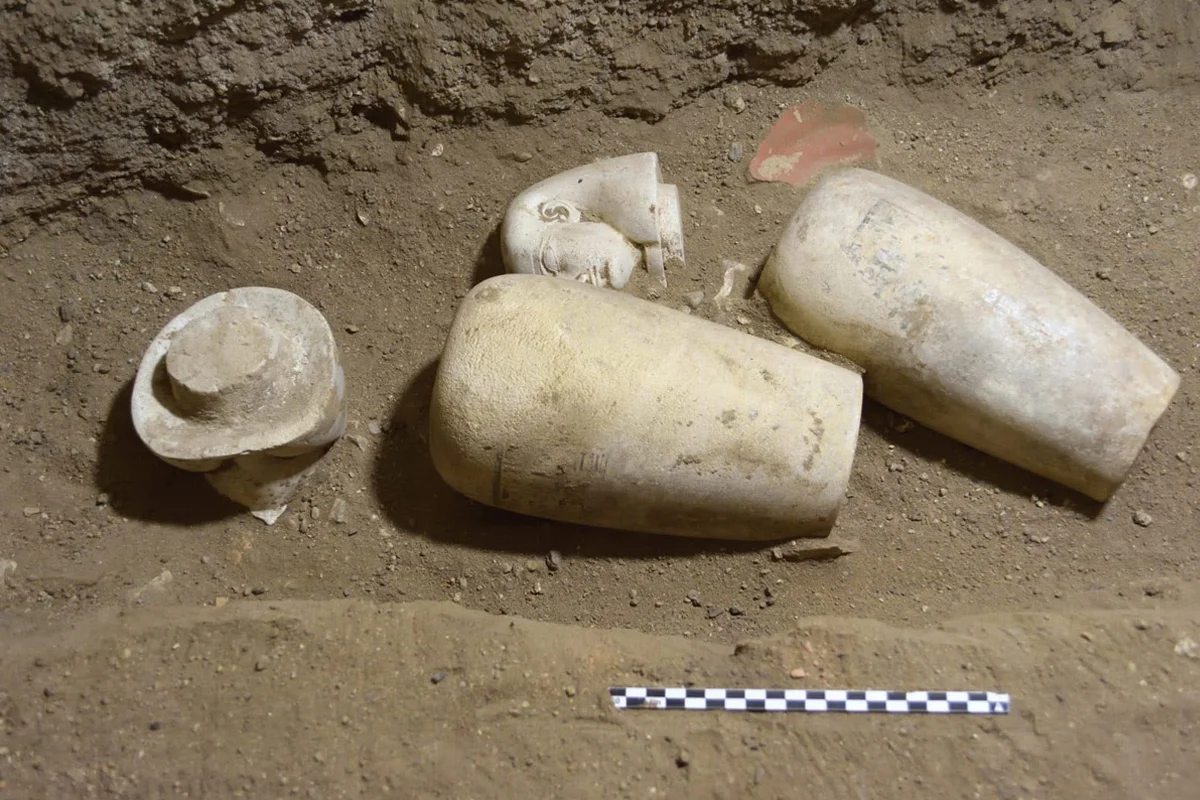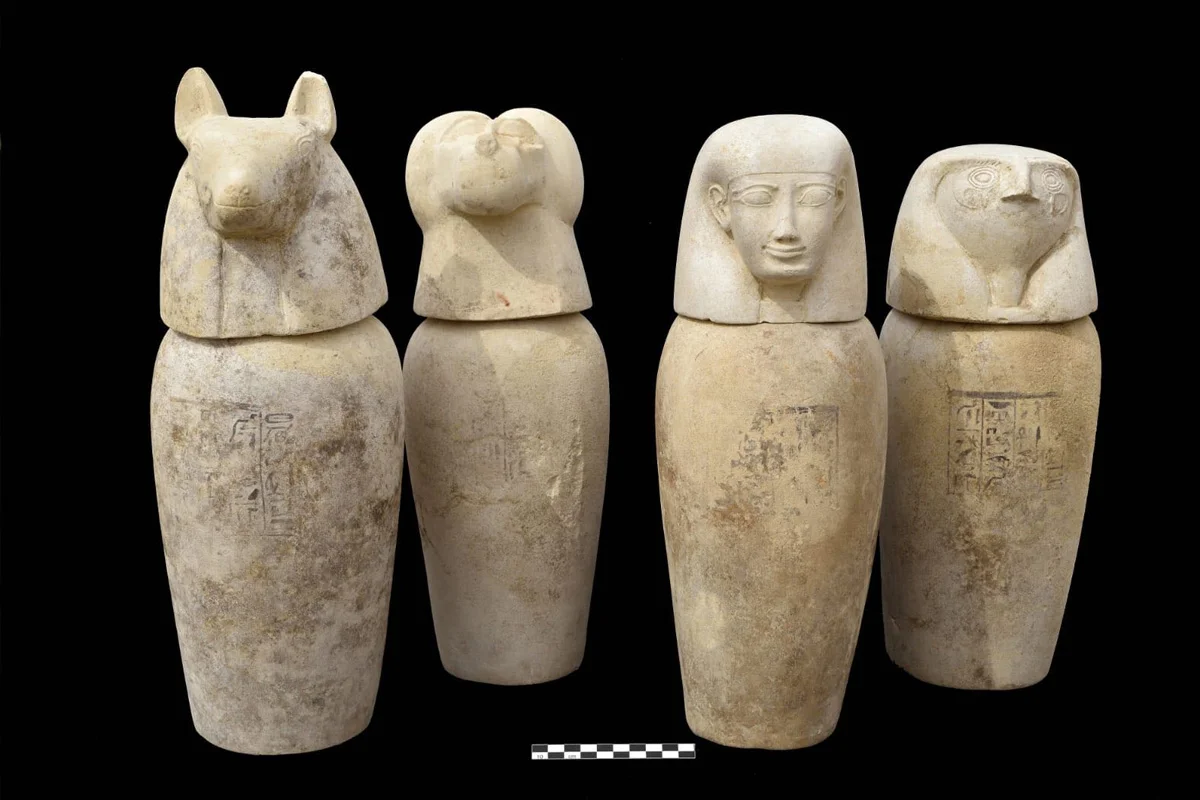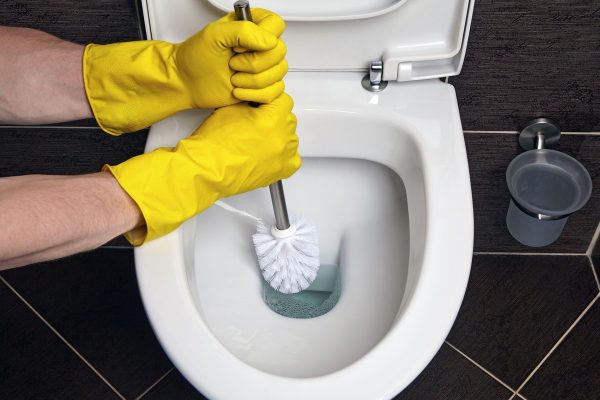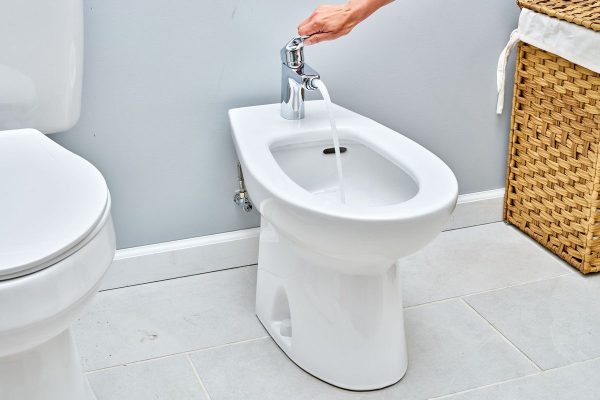This surprising instrument, the only one of its kind, was found in a bedroom in the Stone Village.
The whistle, unique in its kind, was made from the phalanx bone of a cow.
Tell el-Amarna is the current name of the capital of Ancient Egypt during the reign of Akhenaten (Amenhotep IV), the famous tenth pharaoh of the 18th Dynasty. Founded around 1347 BC, the site (known at the time as Akhetaten, “The Horizon of Aten”) flourished for a single generation before being abandoned after the pharaoh’s death some 15 years later.
The settlement has been excavated since the 1970s, and yet even today its sands still conceal surprising finds. The latest discovery, made in an isolated area to the east of the enclave, left archaeologists from the University of Cambridge stunned.
The perforated phalanx of a cow
The team led by Michelle Langley, Anna Stevens and Christopher Stimpson has identified a bone instrument made from the perforated phalanx of a cow. At first, the item did not fit into any known category, until the researchers discovered that what they had before them was a whistle.
The site where it was found was near two areas of the city called the Workers’ Village and the Stone Village, sites that probably housed the stonemasons and labourers responsible for creating the tombs carved into the rock of the nearby royal cemetery.
The red arrows indicate the grooves caused by the drilling of the phalanx. The blue arrow indicates the area damaged by termites.
Both settlements were heavily guarded, with what appear to have been road circuits designed to control movement in and out of these areas. Connected to the road circuits around the Stone Village were two buildings known as Structures I and II.
Structure II was probably a checkpoint or guard post, while Structure I may have been a storehouse or a place where the guards slept. Only one object was recovered from this dormitory during the excavations: a whistle made from cow bone.
Ungulate phalanges have often been used by various cultures to create ornaments, game components, handles, and figurines. The Amarna bone, however, did not fit into any of the above categories, as it lacked the modifications, wear and tear, and taphonomy associated with these uses.
As explained in an article published in the International Journal of Osteoarchaeology, archaeologists resorted to experimental recreation of the artefact using modern cattle phalanges to reveal that the instrument probably served as a whistle that produced a particularly loud sound that could be heard from a distance.
The hypothesis put forward by the researchers, considering the context of the find, is that the whistle could have been used to signal, warn or attract the attention of the rest of the population of the settlements, perhaps as a warning in case of unexpected incursions or criminal acts.
The specialists at the University of Cambridge are aware, however, that there is a lack of direct evidence for such uses, mainly because much of what we currently know about Ancient Egypt is related to royalty and the elite, leaving simpler, everyday objects much less studied.

“Soundscapes” of Ancient Egypt
‘Research into “soundscapes” in ancient Egypt is a very novel line of research. In tomb iconography, we can see ostraca and other instruments that were made and used in various ways. Several of them have even been found and are preserved in museums,’ says Michelle Langley.
What had never been found until now were whistles, and there have been no images of the use of such tools in paintings, engravings, etc. ‘It is possible that these more everyday instruments were not considered important enough to be included in pictorial works,’ adds the archaeologist.
Open sites, such as this area of Tell el-Amarna, are often less well preserved than enclosed spaces such as tombs and caves. Even termites pose a problem for the preservation of organic matter in Egypt, as bones are often severely damaged by these insects.
‘The spectacular tombs and monuments of the elite, their glittering gold and jewelled artefacts have attracted the attention of scholars and the public alike,’ adds Langley, while “simple” undecorated tools ‘may not seem so impressive, but they reveal a lot about the people who made and used them.’
Everyday cultural repertoire
The Amarna bone whistle is a testament to the importance of the everyday cultural repertoire of ancient Egypt. ‘I hope to continue studying how the ancient Egyptians used bone, ivory and shells to create instruments and ornaments, in order to learn more about the lives of ordinary people over the millennia,’ he concludes.





